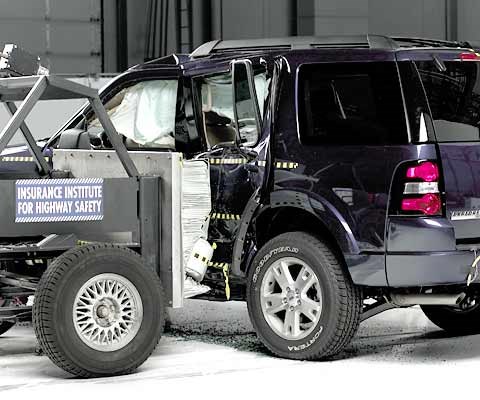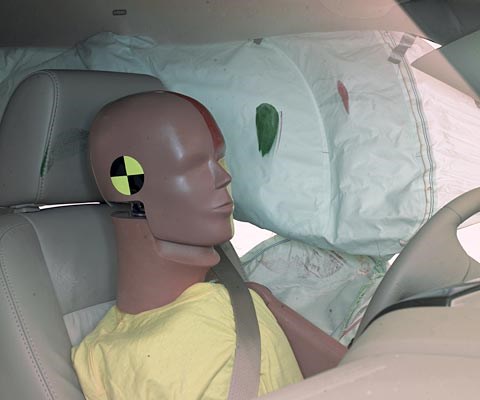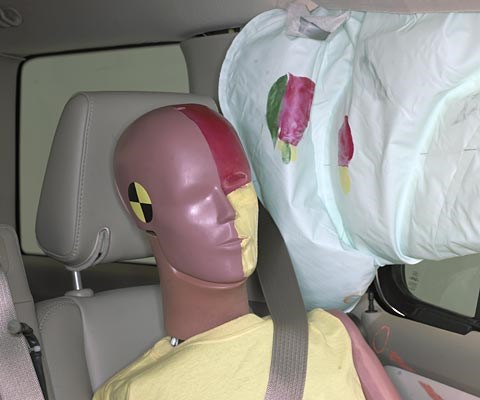Moderate overlap front: original test
Rating applies to 2006-10 models
Tested vehicle: 2006 Ford Explorer XLT 4-door 4wd
The Ford Explorer and Mercury Mountaineer were re-engineered for the 2006 model year. Moderate overlap frontal ratings are assigned by the Institute based on a test conducted by Ford.
The moderate overlap frontal crash test ratings also apply to the Explorer Sport Trac, which was redesigned for the 2007 model year (no 2006 model Sport Trac was available). The Sport Trac is very similar to the Explorer, except that it has a longer wheelbase and an open cargo bed behind the occupant compartment in place of the Explorer's enclosed cargo area with optional third row seat.
| Evaluation criteria | Rating |
|---|---|
| Overall evaluation | |
| Structure and safety cage | |
| Driver injury measures | |
| Head/neck | |
| Chest | |
| Leg/foot, left | |
| Leg/foot, right | |
| Driver restraints and dummy kinematics | |
Side: original test
Rating applies to 2008-10 models
Tested vehicle: 2007 Ford Explorer XLT 4-door 4wd with standard front seat-mounted torso airbags and optional front and rear head curtain airbags
The Ford Explorer and Mercury Mountaineer were re-engineered for the 2006 model year. All 2006-10 models have standard side torso airbags; beginning with 2007 Mountaineer and 2008 Explorer models, head curtain airbags were also made standard.
| Evaluation criteria | Rating |
|---|---|
| Overall evaluation | |
| Structure and safety cage | |
| Driver injury measures | |
| Head/neck | |
| Torso | |
| Pelvis/leg | |
| Driver head protection | |
| Rear passenger injury measures | |
| Head/neck | |
| Torso | |
| Pelvis/leg | |
| Rear passenger head protection | |

View of the vehicle and barrier just after the crash test.

View of the vehicle after the crash with doors removed, showing the side airbags and damage to the occupant compartment.

Smeared greasepaint shows where the driver dummy's head was protected from being hit by hard structures by the side airbags.

Smeared greasepaint shows where the rear passenger dummy’s head was protected by the side airbag.
Head restraints & seats
Seat type: Manual - power cloth seats
| Overall evaluation | |
|---|---|
| Dynamic rating | |
| Seat/head restraint geometry |
About the head restraint & seat test
Currently, IIHS tests apply only to front seats.
